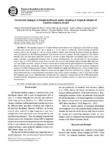Use este identificador para citar ou linkar para este item:
http://www.alice.cnptia.embrapa.br/alice/handle/doc/1002582Registro completo de metadados
| Campo DC | Valor | Idioma |
|---|---|---|
| dc.contributor.author | SILVA, J. A. R. da | pt_BR |
| dc.contributor.author | ARAÚJO, A. A. de | pt_BR |
| dc.contributor.author | LOURENÇO JÚNIOR, J. B. | pt_BR |
| dc.contributor.author | SANTOS, N. de F. dos | pt_BR |
| dc.contributor.author | VIANA, R. B. | pt_BR |
| dc.contributor.author | GARCIA, A. R. | pt_BR |
| dc.contributor.author | RONDINA, D. | pt_BR |
| dc.contributor.author | GRISE, M. M. | pt_BR |
| dc.date.accessioned | 2014-12-15T11:11:11Z | pt_BR |
| dc.date.available | 2014-12-15T11:11:11Z | pt_BR |
| dc.date.created | 2014-12-15 | pt_BR |
| dc.date.issued | 2014 | pt_BR |
| dc.identifier.citation | Revista Brasileira de Zootecnia, v. 43, n. 1, p. 44-48, 2014. | pt_BR |
| dc.identifier.uri | http://www.alice.cnptia.embrapa.br/alice/handle/doc/1002582 | pt_BR |
| dc.description | The hormonal responses of 20 female buffaloes raised under the sun (SS group) or in the shade (CS group) in Belém, Pará, Brazil, were assessed. The CS group (n = 10) was kept in a silvopasture system featuring Racosperma mangium, whereas the SS group (n = 10) was kept in paddocks without shade featuring Brachiaria humidicola, drinking water, and mineral salt. The following parameters were measured for each treatment: dry-bulb temperature (AT), relative humidity (RH), and black-globe temperature in order to calculate the globe temperature and humidity index (GTHI). Blood sample collections to quantitatively determine levels of cortisol, triiodothyronine (T3), and thyroxine (T4) were performed every 14 days, at 13.00 h. Different seasons of the year were also assessed: rainy (January-April), transition (May-July), and less rainy (August-December). Analysis of variance revealed that AT and the index of global temperature and humidity (GTHI) differed between groups; specifically, higher values were found in the SS group, which shows how important silvopastoral systems are in buffalo farming in tropical climates. Relative humidity was significantly different across seasons and particularly high in the rainy season. The treatments influenced cortisol such that higher values were observed in the SS group. The highest mean cortisol levels were recorded during the rainy and less rainy seasons, whereas the highest T3 and T4 levels were recorded only during the rainy season. Triiodothyronine and thyroxine were negatively correlated with AT and GTHI and positively correlated with RH. Silvopastoral systems provide thermal comfort to buffaloes, and the less rainy season is more likely to cause heat stress. | eng |
| dc.language.iso | eng | pt_BR |
| dc.rights | openAccess | pt_BR |
| dc.subject | Ruminant | pt_BR |
| dc.subject | Silvopasture system | pt_BR |
| dc.subject | Thyroid hormone | pt_BR |
| dc.title | Hormonal changes in female buffaloes under shading in tropical climate of Eastern Amazon, Brazil. | pt_BR |
| dc.type | Artigo de periódico | pt_BR |
| dc.date.updated | 2016-03-10T11:11:11Z | pt_BR |
| dc.subject.nalthesaurus | cortisol | pt_BR |
| dc.subject.nalthesaurus | bioclimatology | pt_BR |
| riaa.ainfo.id | 1002582 | pt_BR |
| riaa.ainfo.lastupdate | 2016-03-10 | pt_BR |
| dc.identifier.doi | https://doi.org/10.1590/S1516-35982014000100007 | eng |
| dc.contributor.institution | JAMILE ANDRÉA RODRIGUES DA SILVA, Universidade Federal Rural da Amazônia | pt_BR |
| dc.contributor.institution | AIRTON ALENCAR DE ARAÚJO, UNIVERSIDADE FEDERAL RURAL DO CEÁRA/FORTALEZA | eng |
| dc.contributor.institution | JOSÉ BRITO LOURENÇO JUNIOR, UNIVERSIDADE DO ESTADO DO PARÁ/ BELÉM | eng |
| dc.contributor.institution | NÚBIA DE FATIMA DOS SANTOS, UNIVERSIDADE FEDERAL RURAL DA AMAZÔNIA/ BELÉM | eng |
| dc.contributor.institution | RIANLDO VATISTA VIANA, UNIVERSIDADE FEDERAL RURAL DA AMAZÔNIA/ BELÉM | eng |
| dc.contributor.institution | ALEXANDRE ROSSETTO GARCIA, CPPSE | eng |
| dc.contributor.institution | DAVIDE RONDINA, UNIVERSIDADE ESTADUAL DO CEARÁ/FORTALEZA | eng |
| dc.contributor.institution | MARCIA MASCARENHAS GRISE, CPATU. | eng |
| Aparece nas coleções: | Artigo em periódico indexado (CPPSE)  | |
Arquivos associados a este item:
| Arquivo | Descrição | Tamanho | Formato | |
|---|---|---|---|---|
| PROCI2104.00119.pdf | 635,8 kB | Adobe PDF |  Visualizar/Abrir |









